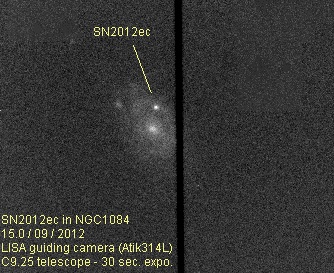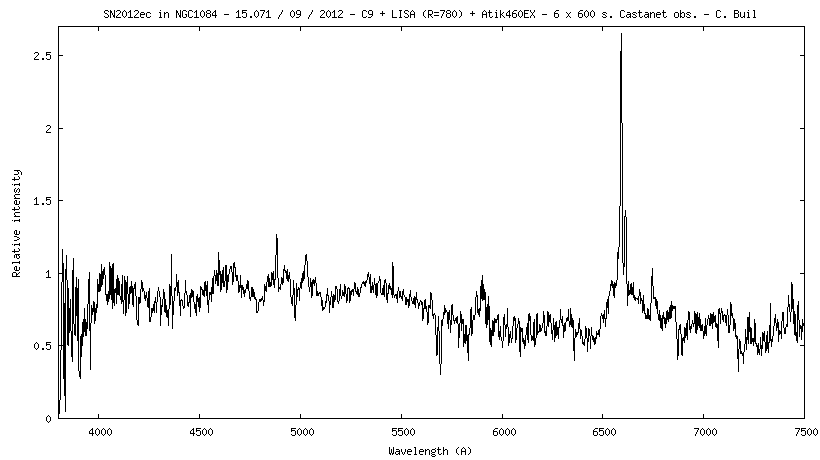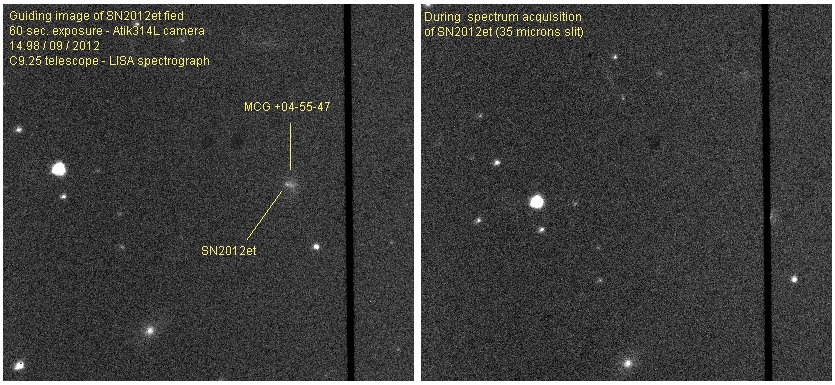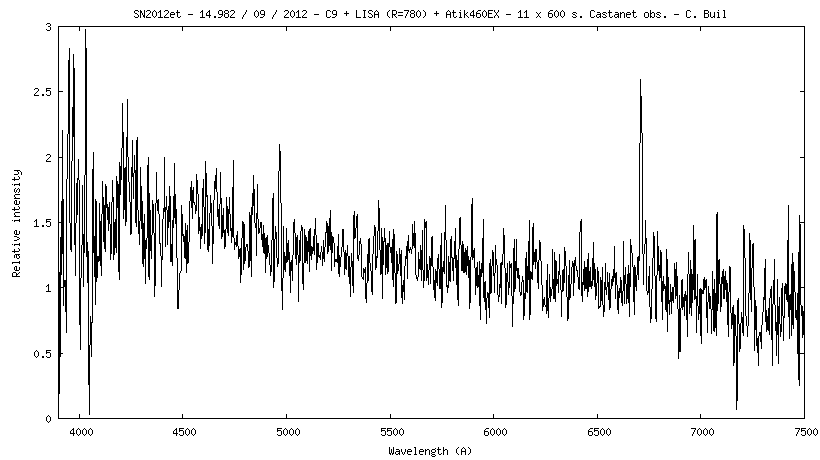First, an image of SN2012ec taken with my the LISA spectrograph guiding camera system (Atik314L):

and now the 2D image (6x 600 sec exposure) - show host galaxy + SN:

(note presence of intense emission line - Halha, NII, SII...)
The spectrum of SN2012ec (15.1/09/2012 - R = 13.8 - Type Ia):

And now my faintest SN for the moment, SN2012et at R = 16.5 (!)

2D spectrum (a faint host galaxy Halpha emission is visible shifted at z = 0.0225):


See also my 2012 supernovae page; http://www.astrosurf.com/buil/supernovae/2012/index.htm
The angular resolution of the telescope can not permit clear separation of
galaxy and supernova spectrum. Remenber, the telescope is only a Celestron 9 (+ surburban condition)....
But the well efficiency for spectro of Atik460EX camera (and the excellent quantum efficiency Sony ICX694 CCD)
is demonstrated (see also http://www.astrosurf.com/buil/isis/noise/result.htm). The detector
is used in binning 2x2 (thanks to small native pixels i.e. 4.54 microns).
------------------------------------------------------------
J'ai utilisé une configuration du LISA avec une caméra Atik460EX exploitée en binning 2x2 et une fente
de 35 microns pour une efficacité maximale en terme de détectivité, mais en sacrifiant un peu la
résolution spectrale (entre R=750 et R=800). Il faut ce rappeler que LISA est aussi un reducteur de focale
de grandissement interne x0.632.
L'image d'une fente de 35 microns sur le détecteur fait donc 22 microns de large. Avec des pixels de
9.08 microns (2x 4.54 = 9.08), l'échantillonnage de la fente (FWHM) est de 2,44 pixels, ce qui est
optimal. Notez qu'une fente de 23 microns donnerait une image trop fine et ne serait pas correctement
échantillonnée (moins de 2 pixels à mi-hauteur).
Cette configuration avec Atik460EX - binning 2x2 - 35 microns est probablement la plus performante
actuellement en terme de détectivité sur LISA. Si on cherche la résolution spectrale ultime
avec LISA, le choix Atik314L + binning 1x1 - fente 23 microns est surement le meilleur
en revanche (difficile de tout avoir d'un coup
Christian B